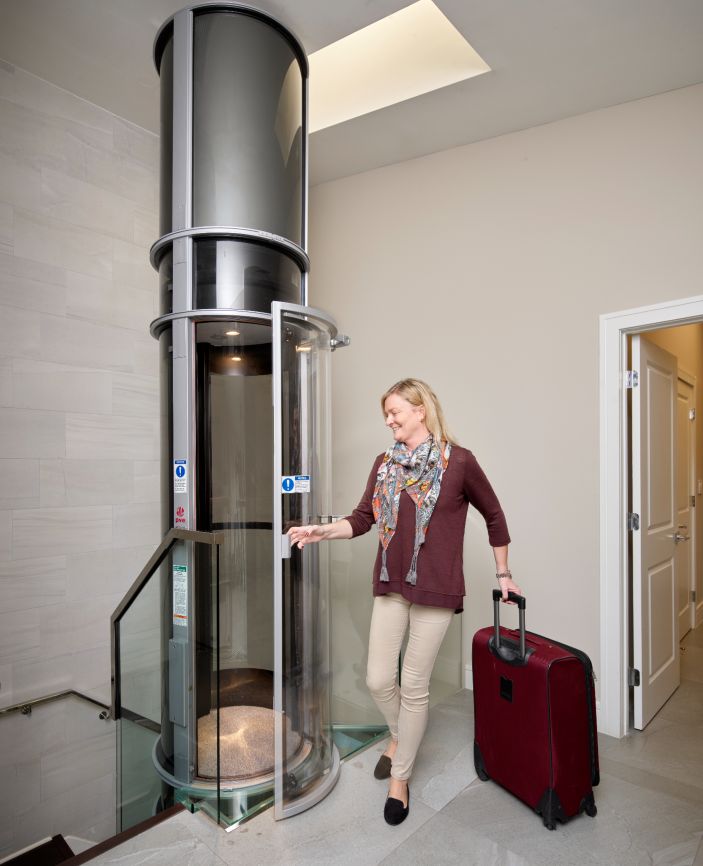Discover the most effective Disabled Platform Lifts Prices UK for Residential and Commercial Usage
Discover the most effective Disabled Platform Lifts Prices UK for Residential and Commercial Usage
Blog Article
Diving Into the World of Lifts: Typical Concerns Dealt With by Various Lift Systems
As we navigate with the vertical transportation systems of modern structures, elevators stick out as an important component of our every day lives. However, behind their seamless procedure lies a globe of intricate systems that can sometimes come across challenges. From hydraulic elevators to grip systems and machine-room-less designs, each lift kind features its set of typical issues. Comprehending these challenges is crucial for making certain the smooth performance of these important systems. Allow's check out the complexities that underlie the operation of elevators and the potential concerns that can arise, clarifying the intricate web of lift mechanisms.
Hydraulic Elevators
Hydraulic elevators, typically favored for low-rise structures, utilize fluid pressure to control the motion of the elevator cars and truck (lift repair companies). This device entails a hydraulic pump pushing oil into a cylinder, causing the elevator to relocate the preferred direction. While hydraulic elevators are understood for their smooth and peaceful procedure, they do include their very own collection of typical problems
One common problem with hydraulic elevators is oil leak. In addition, problems with the control system, such as malfunctioning valves or a malfunctioning pump, can cause disturbances in the lift's motion.
Regular upkeep and punctual repair services are important to guarantee the smooth functioning of hydraulic lifts. By resolving these typical issues proactively, structure proprietors can reduce downtime and ensure the safety and security and effectiveness of their vertical transport system.
Traction Elevators
When taking into consideration upright transport systems in structures, one more common type besides hydraulic elevators is the grip elevator. Grip elevators run using a system of ropes and counterweights that relocate the elevator car by clutching onto the hoist ropes. This mechanism allows for smoother and faster vertical transport compared to hydraulic systems.
Among the common concerns dealt with by grip lifts is rope wear. The continuous movement of the ropes within the grip system can lead to tear and wear with time, potentially triggering the lift to malfunction or come to be risky for usage. Regular examinations and maintenance of the ropes are vital to ensure the elevator's correct functioning and security.
An additional issue that traction elevators might experience is associated with the control system. Problems with the control system can result in concerns such as erratic activity, delays in feedback times, or even total closures. Normal screening and maintenance of the control system are critical to stop such concerns and ensure the elevator's dependability.
Machine-Room-Less (MRL) Lifts

One of the vital elements of MRL lifts is the small gearless grip maker that is mounted within the hoistway. This maker efficiently drives the elevator auto without the demand for large equipment discovered in conventional grip elevators. In addition, MRL elevators commonly use a weight system to balance the auto, further boosting their energy effectiveness.
Despite their advantages, MRL lifts might deal with challenges associated to repair and maintenance because of the restricted room for tools installation. Ease of access for servicing elements within the shaft can be restricted, calling for specialized training for technicians. Proper maintenance routines and routine assessments are crucial to ensure the continued smooth operation of MRL elevators.
Overloading and Weight Limit Issues
Are elevators geared up to deal with excess weight tons effectively and securely? Overwhelming and weight limitation problems are important problems in lift procedures. Lift makers style lifts with particular weight capabilities to guarantee passenger safety and equipment longevity. Exceeding these weight restrictions can bring about numerous issues, including mechanical failures, delays, and safety hazards.
When elevators are strained, it puts excessive pressure on the motor, cables, and various other elements, potentially triggering failures or malfunctions. If they detect excess weight, safety and security systems such as sensing units and overload sensors are in area to avoid lifts from moving. In addition, exceeding weight restrictions can result in increased energy intake and deterioration on the lift system.
To reduce straining problems, constructing managers need to prominently show weight limits in elevators and enlighten occupants on the value of adhering to these limitations - lift repair companies. Normal maintenance checks by qualified technicians can additionally help ensure that elevators are running within secure weight parameters. By resolving overloading and weight limit problems proactively, structure proprietors can enhance elevator security and performance
Electric System Failures
Surpassing weight limitations in lifts can not only lead to additional hints mechanical problems but also possibly add to electric system failures within the lift facilities. Electrical system failures are a crucial issue in elevator procedure, as they can create unforeseen shutdowns, malfunctions, or also security risks.
Routine upkeep and evaluations are crucial to determine and address prospective electric issues promptly, guaranteeing the safe and effective operation of lift systems. By sticking to weight limits and performing regular electric system checks, structure owners can minimize the danger of electrical failures in lifts.
Verdict

Hydraulic lifts, typically preferred for low-rise structures, utilize fluid pressure to regulate the movement of the lift vehicle.When taking into consideration vertical transport systems in structures, another usual type aside from hydraulic lifts is the traction elevator. Grip lifts operate utilizing a system of ropes and weights that move the lift car by grasping onto the hoist ropes. investigate this site Unlike typical elevators that need a different machine space to house the devices, MRL lifts integrate most of the elements within the shaft, removing the need for a specialized equipment room.In final thought, lifts encounter usual issues such as hydraulic malfunctions, traction system failings, and electric system troubles.
Report this page